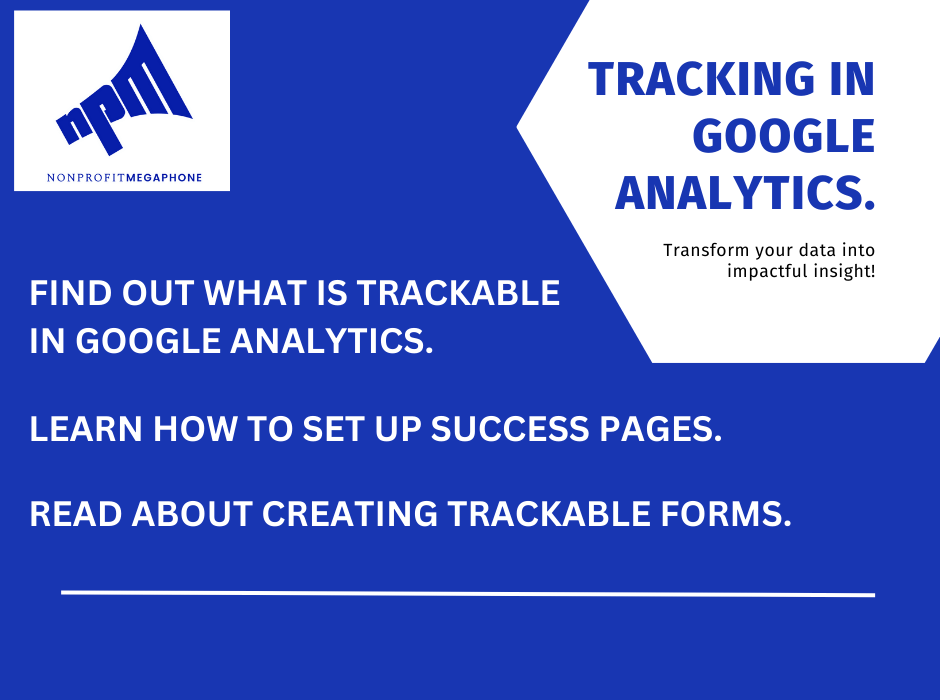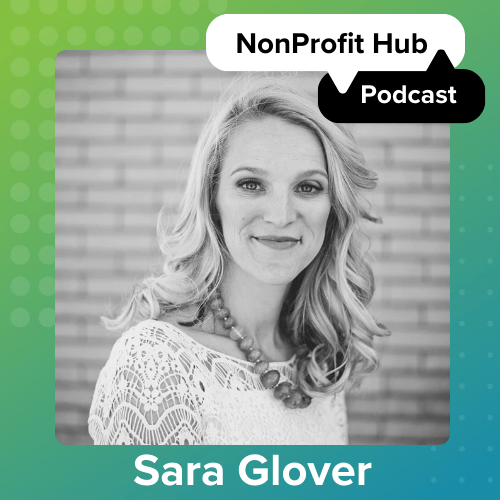What Is Trackable in Google Analytics?
Google Analytics is a free web analytics tool that helps businesses, nonprofits, and other organizations track and analyze their website traffic. It offers a range of features that can assist these organizations in making data-driven decisions about their online presence.
One of the most important aspects of Google Analytics is its ability to track various metrics related to website activity. These metrics can help businesses and nonprofits understand how their website is performing, what content is resonating with their audience, and where they need to focus their efforts to improve their online presence. So, what exactly is trackable in Google Analytics?

In short, there are many things that can be tracked, ranging from basic metrics—like page views and sessions—to more advanced metrics like conversion rates and user behavior. Many of these metrics, but not all, can also be linked to Google Ads, allowing you to see your sitewide analytics alongside information about what users do after reaching your site via ads specifically. Here are some of the most important things that organizations can track in Google Analytics:
- Page Views – This is a basic metric that tracks how many times a specific page on your website has been viewed. Page views can help you understand which pages on your website are the most popular, and which ones may need to be improved.
- Sessions – A session is a group of interactions that a user has with your website within a specific time period. This metric tracks how many sessions have occurred on your website, and allows you to see how engaged your audience is with your content.
- Users – This metric tracks how many unique visitors have come to your website. It is useful because it shows you the size of your audience and how many people are interested in your content.
- Bounce Rate – A bounce occurs when a user visits your website and then leaves without interacting with any other pages or elements on your site. The bounce rate tracks the percentage of users who bounce from your site after visiting a single page. A high bounce rate can indicate that your website needs to be improved to encourage users to stay on your site longer.
- Conversion Rate – This metric tracks how many users take a specific action on your website, such as making a purchase or filling out a form. The conversion rate can help you understand how effective your website is at driving user engagement and sales.
- Referral Traffic – This metric tracks how many users come to your website from other websites, such as social media platforms or search engines. Referral traffic can assist you in determining which marketing channels are driving traffic to your site.
- Search Traffic – This metric tracks how many users come to your website from search engines like Google. It can help you understand which keywords and phrases are driving traffic to your site and how well your website is performing in search engine rankings.
- User Behavior – Google Analytics can also track user behavior on your website, including things like how long users spend on specific pages, which pages they visit, and how they navigate your site. This information is useful because it informs you about how users interact with your content and where you may need to make improvements to enhance engagement.
- Demographics – Additionally, Google Analytics can provide information about the demographics of your website visitors, including their age, gender, and location. This information can help you understand who your audience is and how to better target your marketing efforts.
- E-commerce Metrics – For businesses and organizations that sell products or services online, Google Analytics can track a range of e-commerce metrics, including things like revenue, average order value, and product performance. This allows you to better understand how your online sales are performing and where you may need to make improvements.
In addition to these metrics, Google Analytics can also provide a range of other useful information, such as which devices and browsers users are using to access your website, which pages are causing users to leave your site, and how long it takes for your website to load.
Now that we’ve covered some of the most common things you can track, let’s take a look at some other important aspects of Google Analytics, including what success pages are and how to actually create trackable forms.
Success Pages & How To Set Them Up
Success pages—also known as goal completion pages—are a key feature of Google Analytics that allow organizations to track the success of their website goals. A success page is the page that a user lands on after completing a specific action on your website, such as making a purchase, filling out a form, or signing up for a newsletter.
By setting up success pages in Google Analytics, businesses and nonprofits can track the number of users who have completed a specific action on their website, as well as the conversion rate for each goal. This information can help these organizations understand how effective their website is at driving user engagement and sales, and can be used to make data-driven decisions about website optimization.
Without a success page, you may be able to track the number of users who interact broadly with a given page, form, or button, but by adding a success page, you’ll also have data on how many users actually reach the final step of a given action. Comparing these can help to measure things like cart abandonment, or if users show interest in a certain conversion but are not frequently completing it. This can provide ideas on ways to improve the path to successful conversions on your site.
To set up a success page in Google Analytics, organizations must first define their website goals and identify the pages that users land on after completing each goal. They can then use the Google Analytics goal tracking feature to set up a goal that is triggered when a user lands on the success page. Once the goal is set up, businesses can track the success of their website goals over time and make adjustments to their website to improve their conversion rates.
Now that you know more about success pages and how to create them, let’s explore how to create trackable forms in Google Analytics.
How Do You Create Trackable Forms in Google Analytics?
Creating trackable forms in Google Analytics can help organizations better understand how users are engaging with their website and where they may need to make improvements to improve user engagement and conversion rates. Here are the steps organizations can take to create trackable forms in Google Analytics:
- Set Up a Goal in Google Analytics – To track form submissions, organizations must first set up a goal in Google Analytics that is triggered when a user submits a form on their website. To do this, they can navigate to the “Admin” section of their Google Analytics account, click on “Goals,” and then click on “New Goal.”
- Define the Goal Type – When setting up a new goal, organizations must define the goal type. For trackable forms, the goal type is typically “Destination,” as the goal is triggered when a user reaches a specific page, such as a thank you page or confirmation page (which are types of success pages), after submitting a form.
- Set Up the Destination Page – Organizations must then specify the destination page that triggers the goal. This is the success page that users are directed to after submitting a form.
- Set Up Form Tracking – To track form submissions, organizations can use Google Tag Manager to set up form tracking. This involves creating a tag that is triggered when a user submits a form and sends the form submission data to Google Analytics.
- Test and Define – Once form tracking is set up, organizations should test the form submission process to ensure that data is being accurately tracked in Google Analytics. They can then use the data to refine their website and improve user engagement and conversion rates.
As you can see, creating goals and setting up success pages are important parts of creating trackable forms in Google Analytics. Doing this allows your business or nonprofit to fully utilize Google Analytics and gain insights into how users are engaging with your website, how your website is performing, and how you can improve your online presence.
Are you looking to leverage Google Analytics to improve your nonprofit’s site performance and online presence? All Nonprofit Megaphone plans come with custom conversion tracking and reporting for your Google Grant Ads. Learn more about NPM and reach out today to learn how we can make both the Google Grant and Google Analytics work for your organization!







